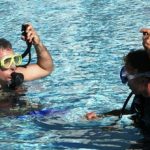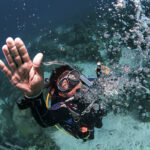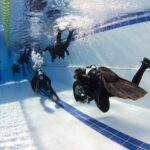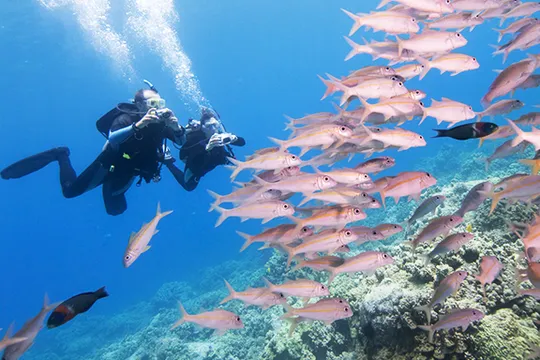7 Ways Save Air and Make the Key West Scuba Diving Fun Last Longer
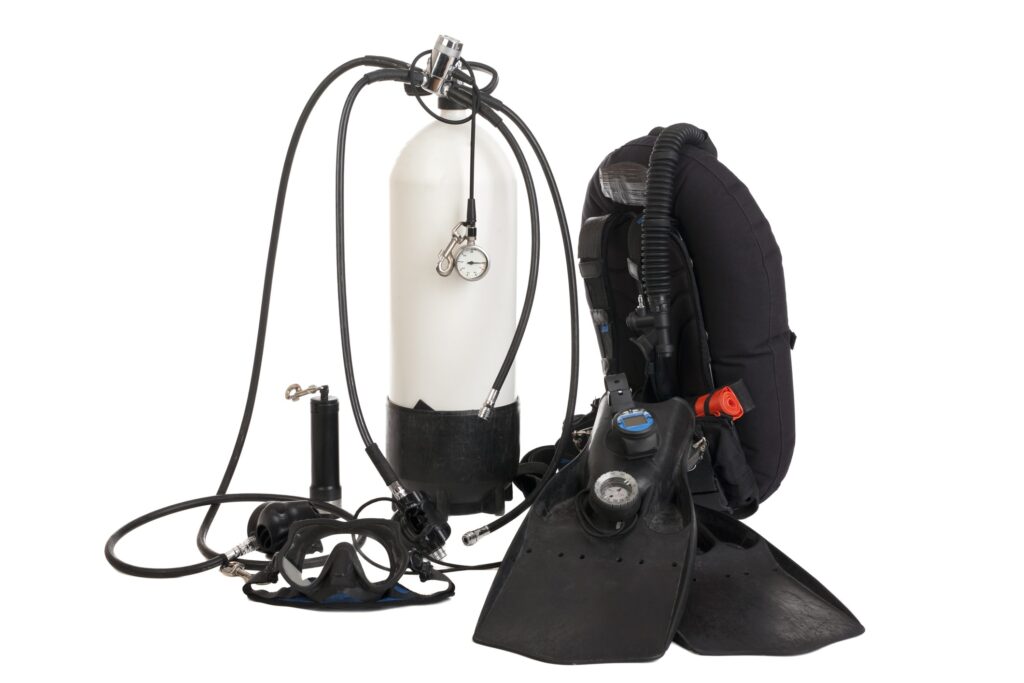
Many factors influence SCUBA air consumption and the time a sport diver can spend underwater. Some things like water temperature, currents, and other aspects of the marine environment are immutable. But there are several strategies a diver can implement to help maximize bottom time and enjoyment on every dive.
Physical Condition
Keeping fit with both cardiovascular performance and muscle strength maintained at high levels is very important for efficient use of air as well as general dive safety. Including swimming and underwater breath control exercises adds a major dive-specific boost to your gym routine. And don’t forget the importance of simply feeling good on your diving days – Being healthy, well-rested, and not jet-lagged or hung over makes a huge difference.
Mental Condition
Safety alone necessitates that a diver remain calm and comfortable at all times when preparing for and during a dive. Any sort of nervousness, anxiety, or even pleasant excitement over the thrill of the dive increases air consumption. If you are a new diver and a bit nervous, log a number of shallow and even stand-up depth confidence-building dives then gradually ease into more challenge as you adjust mentally to being underwater.
Body Temperature
Maintain an optimum body temperature, neither cold nor too warm. Choose a wetsuit to match the dive conditions and your personal needs. Remember that too much wetsuit can cause overheating and restrict movement, reducing efficiency. Also consider the boat ride out and dress to avoid getting chilled pre-dive.
Gear Management
The more you need to fumble and struggle with your gear underwater, the more air you use. Efficient gear management comes with time and practice. Use snorkeling and shallow-dive time to get used to your equipment and dial everything in perfectly.
Breath Control
Rapid breathing is not only a waste of air, you can actually hyperventilate. Breathe slowly and deeply while consciously relaxing and enjoying your dive. Try to spend 5 to 7 seconds on the inhale and 6 to 8 seconds on the exhale. Practice at home with yoga-type breathing exercises. These are very good for dive conditioning in any case.
Buoyancy
Effective buoyancy control is a skill refined with experience. Wear the correct amount of weight properly positioned on your weight belt. Remember to compensate for wetsuit thickness. Your belt and BC vest must fit well to reduce drag. Minimizing the amount of air used for buoyancy control takes practice but it begins with using short bursts of air and taking breaths in between adjustments to gauge the results and avoid an “over-steering” effect.
Underwater Movement
Watch your divemaster or another diver who has hundreds of dives logged. Their movements are languid and unrushed. Arms and hands are often held tucked to chest or along sides to reduce drag, and kicks are slow yet deep and powerful. Learn to control direction and positioning with small, subtle movements of fins, hands, and body. Use bottom features and other structures to shelter from currents when appropriate.
More Bottom Time Means More Fun
Dive time is precious for most of us. Learning how to safely get the maximum out of every tank of air for the given conditions is an essential skill, and in many cases your potential bottom time can be nearly doubled. Start with these basic tips and remember – Practice makes perfect!


- Special Offer
 Special Offer
Special OfferKey West Night 1-Tank Night Scuba Dive
- Special Offer
 Special Offer
Special OfferKey West Scuba Diving Refresher Course & Dive


- Special Offer


